Space News
Guardian
22
Image Credit: Guardian
Private spacecraft Blue Ghost makes successful upright moon landing
- US company Firefly Aerospace has achieved the milestone of landing its spacecraft Blue Ghost on the moon. It is only the second private mission to do so and the first to achieve an upright landing.
- The Blue Ghost Mission 1 touched down near Mons Latreille, on the moon's north-eastern near side. The precision landing was within 100 meters of its target.
- The successful landing is significant, as the first private lunar landing from Intuitive Machines had toppled over upon arrival in 2024.
- The Blue Ghost mission is part of a $2.6bn NASA partnership aimed at cutting costs and supporting the Artemis program to return astronauts to the moon.
Read Full Article
1 Like
Metro
222
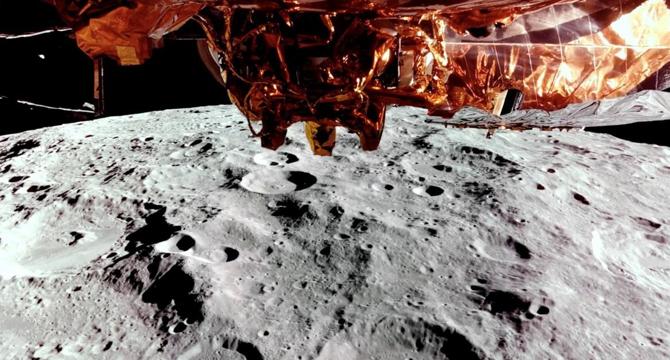
Image Credit: Metro
Private company makes ‘fully successful’ Moon landing for first time ever
- Private company Firefly Aerospace has achieved a 'fully successful' Moon landing, a first for a private entity.
- The Blue Ghost lander landed on schedule and has started sending back photos.
- This achievement marks a milestone in commercial space exploration and opens new possibilities for studying the lunar environment.
- The mission aims to support future human presence on the Moon and Mars.
Read Full Article
13 Likes
Livescience
368

Image Credit: Livescience
Katy Perry will launch to space with historic all-female crew on Blue Origin rocket
- Katy Perry will join an all-female crew on a Blue Origin New Shepard rocket for a suborbital spaceflight.
- The crew includes STEMBoard CEO Aisha Bowe, film producer Kerianne Flynn, CBS Mornings co-host Gayle King, and bioastronautics research scientist Amanda Nguyen.
- The mission aims to inspire the next generation of explorers and challenge their perspectives of Earth.
- Blue Origin's New Shepard rocket is a reusable booster designed for short trips to suborbital space, offering passengers about 4 minutes of weightlessness.
Read Full Article
22 Likes
Brighter Side of News
386

Image Credit: Brighter Side of News
Interstellar tunnel found near our solar system—may be a gateway to other stars
- Scientists have mapped the Local Hot Bubble (LHB), a low-density cavity around our solar system, using the eROSITA X-ray telescope.
- The LHB, formed by past supernova explosions, has a complex structure and a temperature gradient.
- Researchers discovered an interstellar tunnel towards Centaurus in the LHB, allowing hot gas to escape.
- The LHB's role in X-ray emissions has been confirmed, and recent data from eROSITA provided a clearer view of this cosmic bubble.
- The discovery of the Centaurus tunnel could lead to new insights into galactic exploration.
- The study highlights the impact of stellar feedback on shaping the interstellar medium.
- The 3D model of the solar neighborhood also includes superbubbles like Loop I, Orion-Eridanus, Loop II, and III.
- Superbubbles play a crucial role in shaping the Milky Way's structure and influencing star formation.
- Continued analysis of eROSITA data may reveal more secrets about the vastness of space and galactic history.
- The LHB and its features have intrigued astronomers for over fifty years, and recent research has shed light on its nature and impact.
Read Full Article
23 Likes
Discover more
Earthsky
451

Image Credit: Earthsky
Speedy white dwarf planets are more likely to be habitable
- A new study led by UC Irvine reveals that some white dwarf planets could potentially support life, contrary to previous beliefs.
- White dwarfs, the remaining cores of dead stars, were thought to have uninhabitable planets in their orbit, but 'speedy' planets around them could maintain habitable conditions.
- Comparing possible planets around white dwarfs with those around sun-like stars, researchers found that planets orbiting white dwarfs are warmer and more likely to be habitable.
- The study, led by Aomawa Shields, suggests that habitable conditions on white dwarf planets depend on their speed in orbit and proximity to the star.
- The researchers used a 3D climate model to compare planets in habitable zones of white dwarfs and Kepler-62, a sun-like star.
- Contrary to expectations, the white dwarf exoplanet in the simulation was warmer and potentially more habitable than the one around Kepler-62.
- Being tidally locked, the white dwarf planet completes an orbit in just 10 hours, with a warmer climate due to fewer clouds and a stronger greenhouse effect.
- The study opens new possibilities for discovering habitable exoplanets around white dwarfs, showcasing a new frontier in the search for life-supporting worlds beyond our solar system.
- Observational capabilities like the James Webb Space Telescope may lead to studying a new class of worlds around previously unexplored stars.
- Contrary to previous beliefs, the study indicates that some white dwarf exoplanets could potentially support life due to unique climate characteristics.
Read Full Article
27 Likes
Livescience
131
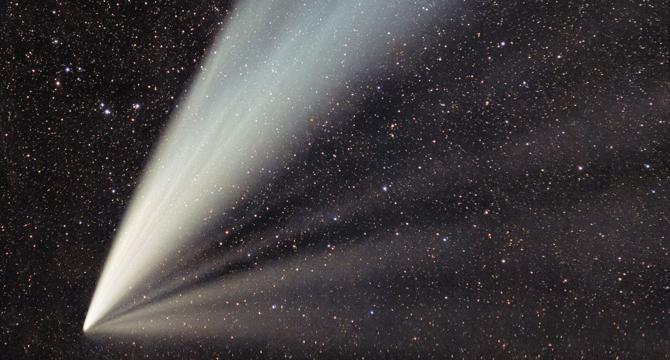
Image Credit: Livescience
Space photo of the week: The last view of the 'Great Comet of 2025' for half a million years
- Comet C/2024 G3 (ATLAS), nicknamed the "Great Comet of 2025," is currently the brightest comet visible from Earth this year.
- Discovered on April 5, 2024, the nonperiodic comet reached perihelion on Jan. 13, 2025, and was at its brightest with a magnitude of -3.8.
- The comet showed signs of disintegration but still displayed bright tails as it headed towards the edge of the solar system.
- According to long-term orbital calculations, if the comet's remains survive, it is expected to be visible from Earth again in about 600,000 years.
Read Full Article
7 Likes
Earthsky
263

Image Credit: Earthsky
Upgraded SpaceX Starship flying Monday: How to see the thrills!
- The SpaceX Starship will fly its 8th test flight on Monday, March 3, 2025.
- The test flight aims to achieve objectives that were not accomplished in the previous test, including payload deployment and reentry experiments.
- The upper stage will target a landing in the Indian Ocean, while the main booster will attempt a midair catch or splashdown in the Gulf of Mexico.
- The test flight will stress-test various aspects of the Starship, including the rear flaps and heat shielding.
Read Full Article
15 Likes
Earthsky
263
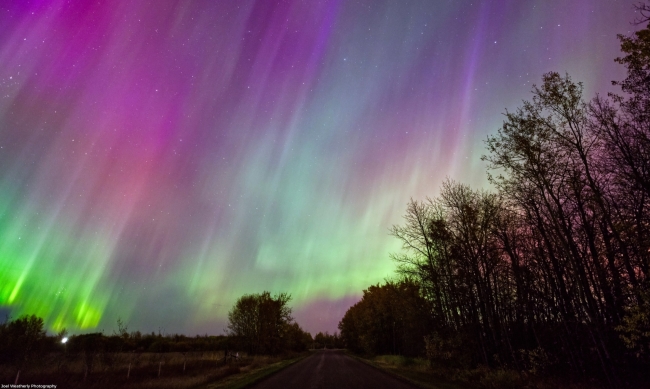
Image Credit: Earthsky
It’s aurora season. Why more auroras at equinoxes?
- Auroras are more frequent around the fall and spring equinoxes, known as the aurora season, due to geomagnetic storms caused by solar activity and disturbances in Earth's magnetic field.
- The twice-a-year increase in auroras is linked to the interaction between Earth's magnetic field and the sun's magnetic field, particularly the Bz component, as explained by the Russell-McPherron effect.
- Scientists like Aloysius Cortie, Sydney Chapman, and David Hathaway have studied and contributed to understanding the seasonal variation in aurora frequency.
- The equinoctial effect, where Earth's magnetic poles align with the solar wind during equinoxes, also plays a role in enhancing aurora activity at those times.
- Geomagnetic storms and auroras are most likely to occur when the magnetic fields of Earth and the sun are in opposite alignment, creating openings in Earth's magnetic field.
- Aurora photos capture the beauty of these natural phenomena during the peak aurora season, showcasing vibrant displays in locations like Norway, Alaska, and Montana.
- The relationship between auroras and equinoxes highlights the intricate connection between magnetism, geometry of celestial bodies, and solar activity in producing these stunning light displays.
- Researchers have studied auroras for over a century, emphasizing the significant role played by the magnetic fields of the sun and Earth in conjunction with their positions in orbit around the sun.
- The link between Earth's magnetic field, solar wind components, and seasonal changes contributes to the understanding of why auroras are more prominent around the equinoxes.
- Aurora enthusiasts are encouraged to share their photos with the EarthSky community to capture and appreciate the beauty of these natural light shows during the aurora season.
Read Full Article
15 Likes
Spaceflightnow
354

Firefly Aerospace aces Moon landing on first attempt
- Firefly Aerospace successfully landed its first Blue Ghost lunar lander on the Moon, marking a significant achievement for the company.
- The landing took place on Mare Crisium, with the spacecraft making a soft touchdown without any anomalies reported during the final hour-long landing sequence.
- Confirmation of touchdown was received at 3:34 a.m. EST through sensors on the lander's legs.
- The CEO of Firefly Aerospace, Jason Kim, expressed elation at achieving this milestone after years of effort.
- Blue Ghost started its journey to the Moon on January 15, 2025, and successfully reached lunar orbit on February 13.
- The mission involved a series of critical maneuvers, culminating in the successful landing on the lunar surface.
- Blue Ghost carries 10 NASA science payloads to conduct various studies on the Moon's surface, aiding in understanding lunar features and conditions.
- The lander is designed to operate for a lunar day, approximately 14 Earth days, and will capture a lunar sunset before concluding its mission on March 16.
- Firefly Aerospace is gearing up for its second CLPS mission to the far side of the Moon in 2026, involving another Blue Ghost lander and an Elytra orbital vehicle.
Read Full Article
21 Likes
Nasa
327

Image Credit: Nasa
Touchdown! Carrying NASA Science, Firefly’s Blue Ghost Lands on Moon
- Firefly Aerospace's Blue Ghost Mission 1 successfully landed on the Moon at Mare Crisium.
- The lander is carrying 10 NASA science and technology instruments, which will operate for about 14 Earth days.
- The mission is part of NASA's Commercial Lunar Payload Services (CLPS) initiative and Artemis campaign.
- The data gathered will improve future human exploration and contribute to the growing lunar economy.
Read Full Article
19 Likes
Guardian
409
Image Credit: Guardian
Astronomers are used to fielding tough questions, but these are out of this world | Séamas O’Reilly
- An article by Séamas O’Reilly discusses the author's trip with his son to the planetarium at the Royal Greenwich Observatory.
- The journey to the planetarium involves multiple modes of transport in London.
- The author's son prepared a list of questions for space boffins and is eager to learn from them.
- During the visit, the author's son engages in a series of inquisitive conversations with a fellow passenger and the young physicist at the planetarium.
Read Full Article
24 Likes
Digitaltrends
40
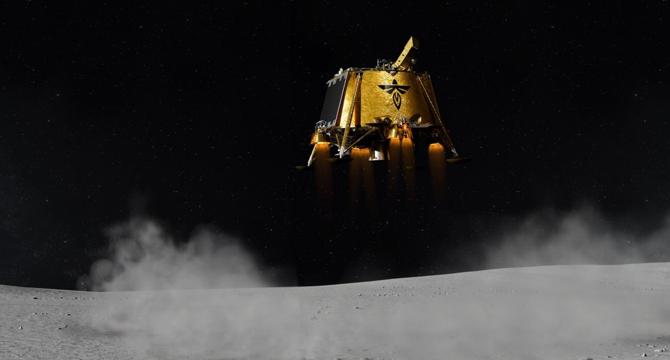
Image Credit: Digitaltrends
Jubilation as Firefly Aerospace makes history with a nail-biting lunar landing
- Firefly Aerospace has become the first private company to successfully land on the moon.
- The Blue Ghost lander made a soft and upright landing on the moon's surface.
- The landing process was performed autonomously using a downward-facing camera and terrain relative navigation software.
- The lander is carrying science experiments and technology tests, including NASA payloads, and will collect data for the next two weeks.
Read Full Article
2 Likes
Earthsky
227

Image Credit: Earthsky
March birthstone: 2 attractive gems to make you happy
- The month of March has two birthstones - the aquamarine and the bloodstone.
- Aquamarine, also known as the 'poor man's diamond,' is a form of the mineral beryl.
- Aquamarines vary in color from deep blue to blue-green and are found in Brazil, Colombia, and other locations.
- Bloodstone, also known as heliotrope, is a form of quartz and is found in India, Brazil, and Australia.
Read Full Article
13 Likes
Livescience
322
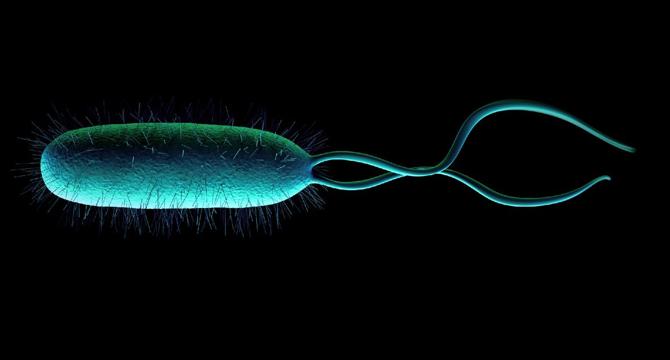
Image Credit: Livescience
If life can exist in your stomach, it can exist on Mars. Here's what it might look like.
- Life on Earth is a unique phenomenon, with ours being the only planet known to support life in the form of single-celled organisms.
- Scientists are exploring the possibility of finding the Last Universal Common Ancestor (LUCA) outside Earth.
- Mars, once potentially habitable, is currently a barren landscape eyed for signs of past life.
- Moons like Europa and Enceladus offer hope with their subsurface oceans that could harbor life in the form of single-celled organisms.
- Extremophiles on Earth have shown that life can exist under extreme conditions previously thought impossible.
- Bacteria like Helicobacter pylori, found in the human stomach, can survive in highly acidic environments and contribute to gastric diseases.
- H. pylori's survival mechanisms, such as flagella and urease enzyme, enable it to thrive amidst stomach acidity and cause ulcers.
- The study of extremophiles gives hope that life could exist in challenging environments on other planets or exoplanets.
- Life's resilience and adaptation, as seen with H. pylori in the human stomach, offer insights into the potential forms of life beyond Earth.
- The search for life beyond Earth considers not just habitable conditions but also the possibility of extremophile-like organisms.
Read Full Article
19 Likes
Universe Today
136

Image Credit: Universe Today
Good News! The Subaru Telescope Confirms that Asteroid 2024 YR4 Will Not Hit Earth.
- The Subaru Telescope at Mauna Kea Observatory in Hawaii has confirmed that Asteroid 2024 YR4 will not hit Earth.
- The asteroid was initially detected on December 27th, 2024 by the Chilean station of the Asteroid Terrestrial-impact Last Alert System (ATLAS).
- Additional observations by various telescopes, including the Subaru Telescope, determined that the asteroid has a 0.004% probability of impacting Earth.
- The International Asteroid Warning Network (IAWN) will continue to track 2024 YR4 through early April, after which it will not be observable from Earth until 2028.
Read Full Article
8 Likes
For uninterrupted reading, download the app